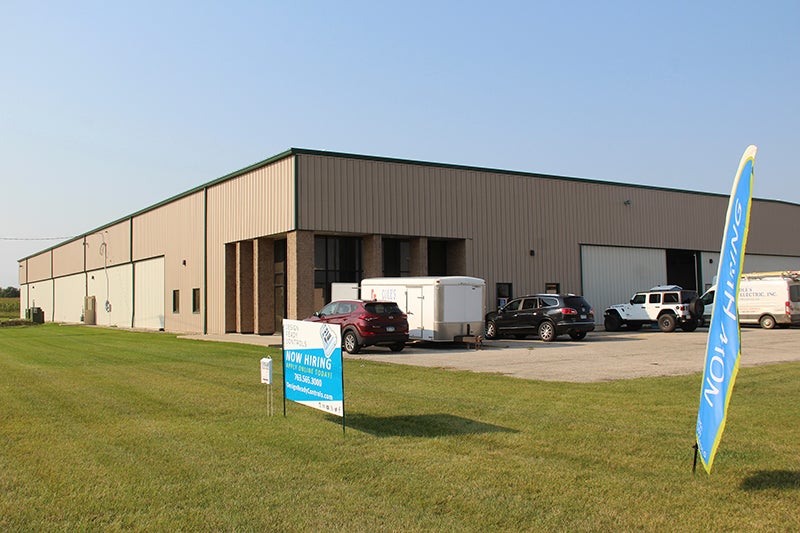Tips for buying the newest TV sets
Published 11:35 am Thursday, December 27, 2012
GENEVA — In today’s society, people often go for the cheap television that is on sale for $600. They think it must be a great TV set, right?
Dak Sorenson of Sorenson’s Appliance & TV explained a few basics that everyone should know about TVs this day and age.
“Just like anything, technology is always moving forward,” Sorenson said. “We live in a fast-paced world and TVs have become so important with jobs, such as Internet, PowerPoints and gathering information that we are always trying to make life more convenient. Look at the world today and what TVs have done for us. Everything from a computer monitor, laptop, phone, etc., everything goes back to the basis of a TV, used for viewing information for work, study and information. Years ago we used TV for entertainment only.”
According to Sorenson, there are two types of TVs for people today. One is a plain TV, just plug it in and watch it, just like an old one.
The other type of TV is the smart TV. This TV does almost anything a computer can do. This is for the people who want to watch Netflix, Hulu and other Internet TV outlets. These TVs also allow people to use Skype, which is talking with a friend or family member on camera while seeing them on your TV set.
“This is a truly fun TV for the people who want the whole TV experience,” Sorenson said. “Smart TVs can be good for people that like to download movies, search the Internet, etc. You have to be careful to make sure that you’re getting what you want in the TV. Smart TV doesn’t always mean you’re getting a TV that will do everything. Make sure you ask what each smart TV does before buying.”
A big thing to look for when buying a smart TV is the built-in wireless Internet. That seems to boost the cost up 5 to 8 percent.
“Three-D adds cost as well. Camera built-in the TV, do you need it? Web browser to search the Internet, do you need it? These are all cost factors and you have to ask yourself if it’s worth the extra money. I think the biggest thing when buying a smart TV is what you’re going to use it for,” Sorenson said.
Another debate among consumers is the difference between LED and LCD TVs. Which is better?
“LCD are about to the end of their life cycle. LED are cheaper to make,” Sorenson said. “LEDs have the bright picture. They are the cheapest to run at roughly $10 per year for a 50-inch. They use the least amount of energy which gets them the Energy Star rating. They are great for a sunny room, very low glare. LEDs have roughly 125,000 hours of viewing pleasure on some models (Samsung, Panasonic and Sharp).”
If a person left a TV on nonstop, 125,000 hours is more than 14 years.
Plasma TVs are still around after being the first new-style TV out on the market. They run about $20 per year for a 50-inch, according to Sorenson.
“The viewing angles are great, better then LED,” Sorenson said. “They have a deeper color to the picture and are great for downstairs viewing. We still have over 50 percent that don’t have an LED/plasma TV yet so the market is still pretty good. 2013 is going to be the year for the best pricing. They are down to the bottom for dollar figures. Until you see new technology come out I don’t think you’ll see a big drop in price in the next few years.”
The never-ending debate about which brand to buy is always on the consumer’s mind when purchasing a new TV. According to Sorenson, certain brands of TVs will have a lifespan of only two or three years and have a high failure rate.
“Make sure you ask the question about service as well. Many TVs have trouble getting parts and the wait time can be up to three months,” Sorenson said. “Some of the better brands I’ve had good luck with are Samsung, Panasonic and Sharp. They seem to be very trusted TVs with parts available within a couple of days. In 2012, I’ve only had a one percent failure rate on my Samsung lineup, which means one out of 100 have something wrong. That is great.”
According to Sorenson, Samsung is the No. 1 selling TV for the store. They have high-end TVs or the TVs without all of the bells and whistles. Paying more for a TV doesn’t always mean the buyer are getting a better TV in the Samsung lineup. Some have the extra features, and some don’t.
“Samsung TVs can be serviced if something does have a problem,” Sorenson said. “Not too many brands can anymore.”
The size of TV can be a tough decision too. According to Sorenson, if a person is sitting eight to 10 feet away, anywhere from a 40- to 46-inch TV is ideal, 10 to 12 feet away and anywhere from a 46- 55-inch is good and if a person is more than that, then a 55-inch or larger would suit your needs.
He said his dream TV set up would be four 60-inch TVs with four different ball games on, all in HD and no commercials. And his TV would be a Samsung LED.
“TV business seems to be at an all-time high the last three years,” Sorenson said. “They are even talking about have 3-D being used without wearing glasses in the next couple years.”
Sorenson’s Appliance & TV started business in 1951 located on the north end of Geneva, in the old Torgerson Gas Station. It was then known as the Sorenson’s Standard and Appliance Store, owned and operated by Warren Sorenson.




